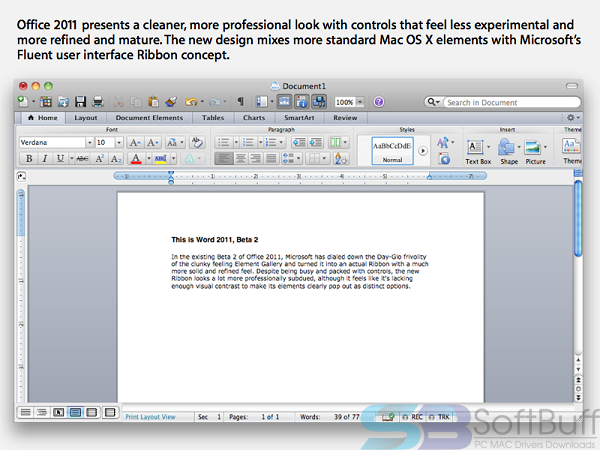

- #Office 2011 for mac mega mac os x
- #Office 2011 for mac mega manual
- #Office 2011 for mac mega software
- #Office 2011 for mac mega free
Rate Variation and Base Compositions: Gamma rates (G) and Invariant sites (I)* models Incorporate Compositional Heterogeneity. Protein: Poisson, Equal-Input, Dayhoff (+F), Jones–Taylor–Thornton (+F), Whelan and Goldman (+F)*, Mitochondrial REV (+F)*, Chloroplast REV (+F)*, Reverse Transcriptase REV (+F)* Substitution models (+F = with empirical frequencies REV = reversible)ĭNA: General Time Reversible (GTR)*, Tamura–Nei, Hasegawa–Kishino–Yano*, Tamura Three-Parameter, Kimura Two-Parameter, Tajima– Nei, Jukes–CantorĬodons: Nei–Gojobori (original and modified), Li–Wu–Lou (original and modified) Molecular Clocks: Tajima’s 3-Sequence Clock Test* Likelihood Ratio Test (ML) for a Topology* Estimate Branch Lengths under Clock* Tests of Selection: For Complete Sequences or Set of Codons Sequence Pairs or Groups (Within and Between)Īncestral Sequences: Infer by ML with Relative Probabilities for bases or residues* or by MP (all parsimonious pathways) Infer phylogenies: Infer Phylogenetic Trees (NJ, ML*, ME, MP) Phylogeny Tests (Bootstrap and Branch-length tests) Branch-and-Bound Exact Search (MP) Heuristic Searches: Nearest-Neighbor-Interchange (NNI ML*, ME, MP), Close-Neighbor-Interchange (CNI ML*, ME, MP), and Max–Mini (MP)Ĭompute distances: Pairwise and Diversity Within- and Between-Group Distances Bootstrap and Analytical Variances separate distances by Site Degeneracy, Codon Sites Separation of Distances in Transitions and Transversions Separate Nonsynonymous and Synonymous Changes Models and parameters: Select Best-Fit Substitution Model* (ML) test pattern homogeneity Estimate Substitution Pattern (MCL, ML*) Estimate Rate Variation Among Sites* (ML) Estimate Transition/Transversion Bias (MCL, ML*) Estimate Site-by-Site Rates* (ML). Major analyses (statistical approach in parentheses) Built-in automated aligners: CLUSTALW and MUSCLE*.
#Office 2011 for mac mega manual
In the following, we provide a brief description of methodological advancements, along with relevant research results, and technical enhancements in MEGA5.ĭNA, codon, and protein alignments both manual and automated alignments with trace file Editor. Table 1 contains a summary of all statistical methods and models in MEGA5, with new features marked with an asterisk (*). With the fifth major release, the collection of analysis tools in MEGA has now broadened to include the maximum likelihood (ML) methods for molecular evolutionary analysis. Over the years, it has grown to include tools for sequence alignment, phylogenetic tree reconstruction and visualization, testing an array of evolutionary hypotheses, estimating sequence divergences, web-based acquisition of sequence data, and expert systems to generate natural language descriptions of the analysis methods and data chosen by the user ( Kumar et al.
#Office 2011 for mac mega software
The Molecular Evolutionary Genetics Analysis (MEGA) software was developed with the goal of providing a biologist centric, integrated suite of tools for statistical analyses of DNA and protein sequence data from an evolutionary standpoint.
#Office 2011 for mac mega free
It is available free of charge from Introduction
#Office 2011 for mac mega mac os x
This version of MEGA is intended for the Windows platform, and it has been configured for effective use on Mac OS X and Linux desktops.


The MEGA user interface has now been enhanced to be activity driven to make it easier for the use of both beginners and experienced scientists.

In computer simulation analyses, ML tree inference algorithms in MEGA5 compared favorably with other software packages in terms of computational efficiency and the accuracy of the estimates of phylogenetic trees, substitution parameters, and rate variation among sites. The newest addition in MEGA5 is a collection of maximum likelihood (ML) analyses for inferring evolutionary trees, selecting best-fit substitution models (nucleotide or amino acid), inferring ancestral states and sequences (along with probabilities), and estimating evolutionary rates site-by-site. Here, we announce the release of Molecular Evolutionary Genetics Analysis version 5 (MEGA5), which is a user-friendly software for mining online databases, building sequence alignments and phylogenetic trees, and using methods of evolutionary bioinformatics in basic biology, biomedicine, and evolution. Comparative analysis of molecular sequence data is essential for reconstructing the evolutionary histories of species and inferring the nature and extent of selective forces shaping the evolution of genes and species.


 0 kommentar(er)
0 kommentar(er)
